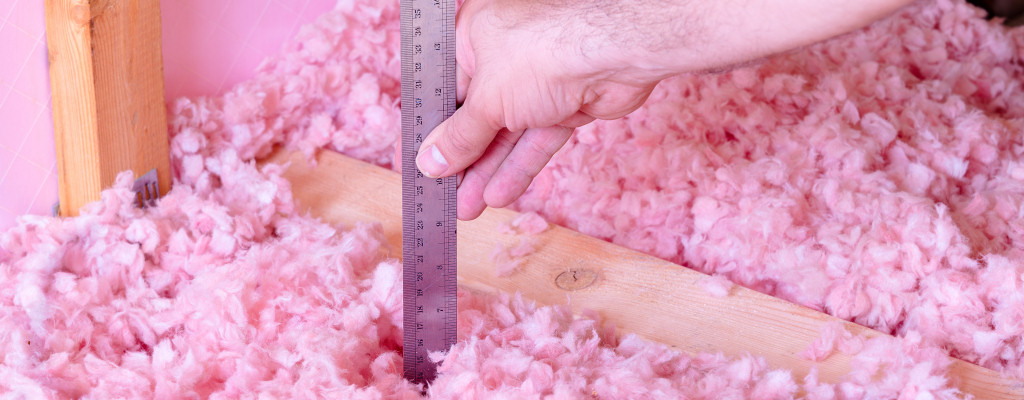HVAC systems are all about efficiency, and they become less efficient with age. Aside from age, another element that impacts your HVAC system’s effectiveness is your home’s insulation. It stands to reason that in order to maintain a comfortable and consistent indoor temperature, your walls, rafters, windows, ducts and other empty gaps in your home’s structure should be well-insulated. But that’s not all home insulation does for you.
Why should I add insulation?
You may have invested a significant amount of money to repair your HVAC system or install a new one recently. That’s only half of the job, though. Now, you should make sure that your home is doing its part to promote efficient heating. That’s where proper insulation throughout the house comes in. Without adequate insulation, a considerable amount of the heated air will escape your home, forcing your system to work much harder. Naturally, that translates into higher energy bills and a reduced comfort level.
Poor insulation can also lead to health issues for your family. Mother Nature can be relentless during Ohio winters, and a quick look at this weekend’s forecast shows that she won’t be easing up anytime soon. Even the best HVAC systems can fail due to poor insulation, leaving your family without heat at the worst possible time. Also, inadequate insulation causes drafty living spaces, which leads to an increased chance of illness. Winter is hard enough without being sick more often!
Where should I insulate?
Generally speaking, you should insulate every part of your home that is adjacent to the outside elements. Some of the following areas are obvious, but there are a few that the average homeowner might not have considered: roof, attic, walls, windows, doors, ducts, floors, and ceilings. Insulation differs for each of these areas, but the principle remains the same – keep the warm air inside and the cold air outside (and vice-versa during the summer months, of course).
What type of insulation do I need?
There are several types of insulation, and each one has advantages and disadvantages.
Fiberglass. The most common type of insulation, fiberglass can be purchased as batts (usually in rolls) or as loose fill. Batts are simple to install since they are woven blankets of insulation that include a paper or foil moisture barrier. Even though fiberglass is inexpensive, it provides desirable features like resistance to water damage and fire.
Mineral wool. Similar in structure to fiberglass, mineral wool is more expensive and not as easy to find. Mineral wool can be compared to dryer lint in terms of physical appearance. A disadvantage to mineral wool is that it cakes when wet and also settles over time, which results in less effectiveness.
Cellulose. Made from recycled paper, cellulose insulation is available as a loose fill product that has been treated to resist damage from moisture and pests. However, like mineral wool, when moisture absorption occurs, cellulose becomes compacted, dense and less effective.
Spray foam. Touted as a green product, spray foam is a polyurethane product created by mixing two chemicals. It is then applied with a hose. While most spray foam can be installed without issues, serious problems can occur, including difficulty breathing, unpleasant odors, and other health problems if the job is done incorrectly.
How much will insulation cost me?
Before we look into the costs, it’s important to remember that a well-insulated home will translate to tremendous long-term savings on your monthly energy bills. Insulation costs will vary based on the materials and method of installation. Many homeowners opt to install their own insulation, but it can be helpful to work with a professional who will expertly calculate your needs in the spaces in question. Working with a professional is essential if your insulation project is subject to local building codes.
A recent study found that after analyzing over 7,500 home insulation projects, the average cost to install home insulation is nearly $1,300. Your costs will be more if you’re removing old material. In older homes, insulation materials likely have degraded due to a lack of standards at the time of installation. Cellulose, for example, was very popular in the late 1970s as homeowners took steps to improve home energy costs in the face of the Middle Eastern oil embargo. As a result, insulation standards were developed, to address issues like fire resistance and R-value.
How can I save money on my insulation project?
Like most household projects, you can save a significant amount of money by installing the insulation yourself. Home insulation is a very user-friendly DIY project, but hiring a contractor does have its benefits. Hiring a professional insulation contractor can save you time, materials and aggravation. A professional’s expertise, specialized equipment, and precise calculations equal even greater energy efficiency, leading to lower energy costs for you in the long run. A professional will also be bonded and insured, so it’s in their best interest to install your new insulation properly and safely.
Is new insulation worth it?
Absolutely! Between 50% and 70% of the average American home’s energy is used for heating and cooling. That means that up to 70% of your monthly energy expense is tied to your HVAC system and home insulation. If you want to save money on your energy bills – and who doesn’t? – make sure you have the best home insulation available – otherwise, the money you spend heating your home could be literally going out the window!


Comments are closed